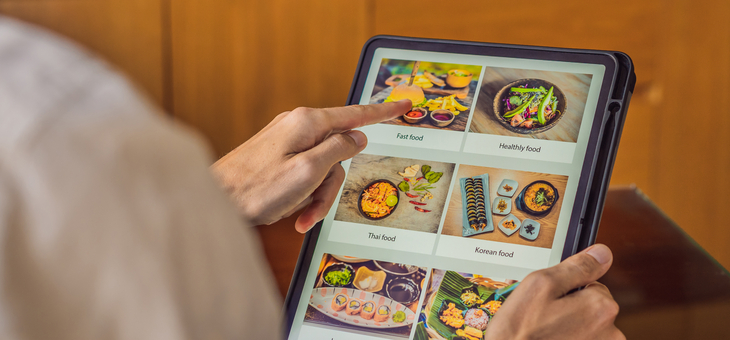We are living in a golden age of ordering takeaway food and having it delivered to our homes, but that isn’t a particularly good thing for our waistlines or our health.
With this in mind, researchers have taken to investigate ways we can encourage more people to choose healthy options when ordering food online.
And a team of Australian psychologists think they have found an extremely simple solution – place more of the healthy options at the top of online menus.
Read: The food items that could cause a second heart attack
Women who see healthy food at the top of an online menu are 30 to 40 per cent more likely to order it, a Flinders University study has found.
The authors believe that menu placement could play a vital role in encouraging healthier eating.
Flinders University PhD candidate Indah Gynell said the study found that where foods were ordered on a menu played a key role in food choice.
Read: Everything you need to know about flavonoids
“Previous research has explored menu placement before, but the studies were inconsistent, with some finding placing food items at the top and bottom of a menu increased their popularity, while others suggested that the middle was best,” said Ms Gynell.
“In our study we compared three locations on both printed and online menus, with online being an important addition in the age of food ordering platforms, such as UberEats and Menulog, especially during the pandemic.”
The researchers created menus containing eight unhealthy items and four healthy items, arranged in three rows of four on the physical printed menu and in one column of 12 on the digital menu.
In one study, the physical menu was tested on 172 female participants, while in the second study, the digital menu was tested on 182 female participants.
Read: A handy guide to ensure you don’t eat too much
Female participants were chosen as previous research has found that dieting behaviours – likely to impact menu choice – are consistently more prevalent in women.
Participants then chose an item from one of the experimental menus before completing a psychological test that identified their ‘dietary restraint status’; that is whether or not they were actively choosing to restrict their eating habits for the purpose of health or weight loss.
“We found that neither the order of food items, nor participants’ dietary restraint status, impacted whether or not healthy food was chosen in the physical menus,” said Ms Gynell.
“However, for the online menus, we found that participants who saw healthy items at the top of an online menu were 30–40 per cent more likely to choose a healthy item than those who viewed them further down the menu.”
The authors say the finding is important because if added up over time, consistent healthy choices could result in general health benefits at a population level, highlighting why such an intervention could be worth implementing.
“Diet-related illnesses and disease are more common now than ever before, and with a rise in online food ordering it’s important we uncover cost-effective and simple public health initiatives,” said Ms Gynell.
“Changing the order of a menu, which doesn’t require the addition or removal of items, is unlikely to impact profits as consumers are guided towards healthier options without being discouraged from purchasing altogether.
“This means it’s more likely to be accepted by food purveyors and, despite being a somewhat simple solution, has the potential to shape real-world healthy eating interventions.”
How do you decide what to order from an online menu? Why not share your thoughts in the comments section below?
If you enjoy our content, don’t keep it to yourself. Share our free eNews with your friends and encourage them to sign up.

